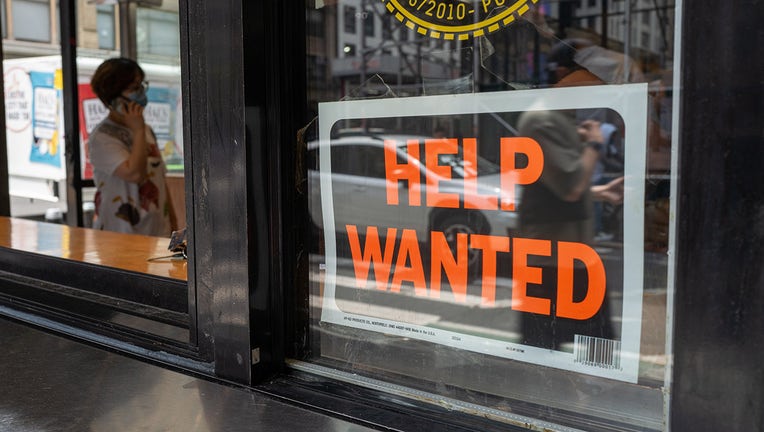Florida jobless rate down to 2.6-percent

A "help wanted" sign is displayed in a window in Manhattan on July 28, 2022 in New York City. (Photo by Spencer Platt/Getty Images
TALLAHASSEE - Florida’s unemployment rate dipped to 2.6 percent in November, after a brief surge in claims following Hurricane Ian.
The November rate was down from 2.7 percent in October, as Gov. Ron DeSantis credited the state’s "resilience in this economy."
The Florida Department of Economic Opportunity, in a report released Friday, estimated that 280,000 Floridians qualified as unemployed in November, down 5,000 from October and 87,000 from November 2021. The estimated labor force grew by 352,000 over the year to 10.756 million.
"Jobs are being added, unemployment is declining even when we had a near-Category 5 hurricane just a couple months ago," DeSantis said Friday during an event in Fort Myers Beach. "So, it shows you that we have a lot of resilience in this economy, and we're doing a lot of things right in the state of Florida."
The national unemployment rate held at 3.7 percent from October to November, according to the U.S. Department of Labor, which estimated the U.S. economy added 263,000 jobs in November.
Florida’s leisure and hospitality sector continued to show the largest gains in new jobs, up 9,600 jobs from October and 97,000 over the year. The new numbers came even after the Category 4 Hurricane Ian caused at least two Southwest Florida resorts --- Ritz Carlton, Naples and South Seas Island Resort --- to lay off more than 800 people.
Ian made landfall Sept. 28 in Lee and Charlotte counties before crossing the state. Speaking to state senators Wednesday, Amy Baker, coordinator of the Legislature’s Office of Economic & Demographic Research, noted the impact of the storm on the state’s tax revenues in October.
"We saw, for example, the tourism and leisure (tax revenue) category go up. That had a lot to do with evacuations and people having to travel into hotels. So, it was a little bit higher than normal," Baker said. "Other things were lower than they should have been. … That's because people are distracted. They're dealing with the emergency. Businesses, depending on where you are, were closed right after the hurricane. So, it has kind of a negative effect. That's detectable, particularly on sales tax (collections)."
Baker cautioned that tourism could be affected by lingering inflation, the prospect of a recession and issues such as a heavier reliance on credit cards.
"Partially because this is mild, what we see is that people may still come, but they make different decisions," Baker said. "I might have come for a week. And maybe now I'm only going to come for five days. Or I might have stayed in a higher-priced hotel. And now I'm looking for something that gives me a better bargain."
Consumer prices were up 7.1 percent nationally in November from a year earlier. That was down from 7.7 percent in October and a 9.1 percent peak in June.
Florida was one of three states that posted lower unemployment rates in November than October. Florida also had the largest number of job gains at 28,100, followed by Illinois at 17,500 and Massachusetts at 17,300.
Since the start of November, the state has averaged 6,041 first-time unemployment claims a week, according to the U.S. Department of Labor.
Before Hurricane Ian, Florida averaged 6,120 claims a week going back to the start of July, Department of Labor numbers show. In the three weeks after Ian, the weekly average was 11,871.
Among metropolitan statistical areas, the lowest unemployment rate in November was in the Miami-Fort Lauderdale-West Palm Beach areas, at 2.1 percent. The next-lowest rates were in the Panhandle, with the Crestview-Fort Walton Beach-Destin area at 2.3 percent and the Panama City area at 2.4 percent.
The Jacksonville area was at 2.5 percent. The Tampa-St. Petersburg-Clearwater and Pensacola areas were at 2.6 percent, while the Orlando-Kissimmee-Sanford region was at 2.7 percent.
As hurricane recovery continued in Southwest Florida, the Naples-Immokalee-Marco Island area’s unemployment rate improved from 2.9 percent in October to 2.7 percent, while the North Port-Sarasota-Bradenton region went from 2.7 percent to 2.6 percent.
The highest rate in November was in the Sebring area at 4.2 percent.
The statewide unemployment rate is seasonally adjusted, while the regional rates are not.

